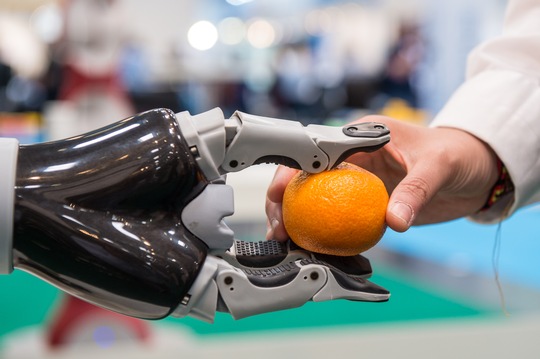 The sales value of professional service robots worldwide has increased by 32% to US$11.2 billion (2018-2019). In the current year, the market is receiving further impetus from the COVID 19 pandemic. This is shown, for example, by the great demand for disinfection robots, logistics robots in factories and warehouses or robots for delivering goods to the front door. This is reported by the International Federation of Robotics (IFR) with the publication of the yearbook World Robotics 2020 - Service Robots.
The sales value of professional service robots worldwide has increased by 32% to US$11.2 billion (2018-2019). In the current year, the market is receiving further impetus from the COVID 19 pandemic. This is shown, for example, by the great demand for disinfection robots, logistics robots in factories and warehouses or robots for delivering goods to the front door. This is reported by the International Federation of Robotics (IFR) with the publication of the yearbook World Robotics 2020 - Service Robots.
The most profitable segment of professional service robots is medical robots with a market share of 47% in 2019, with robot systems used in surgery and achieving the highest individual prices contributing to this. Sales of medical robots as a whole reached a new record level of USD 5.3 billion - an increase of 28%. Around 90% of medical robots come from American and European suppliers. The IFR expects the market potential to remain large until 2022: turnover could more than double to 11.3 billion US dollars.
Professional Service Robots - LogisticsThe market value of sold or leased logistics robots increased by 110 % to 1.9 billion US dollars. Almost all sales are generated with logistics robots that are intended for indoor use. Autonomous mobile robots initially worked mostly only in warehouses. However, with digitalisation, they are now increasingly part of production in intelligent factories. The trend towards continued strong sales growth of 40 % or more per year seems possible.
"Investments in manufacturing processes with service robots for logistics quickly pay off," says Milton Guerry, president of the International Federation of Robotics. "With an assumed 24-hour operation, the purchase will pay for itself within 2 to 3 years - often much faster. Assuming a service life of 15 years, the operating costs are around 5% of the annual investment. At the same time, highly developed systems often offer an operational availability in the range of 98 % and more".
The trend is towards Robotics-as-a-Service (RaaS) business models, which lower the hurdles for customers to automate with robots. The advantage is that customers do not have to invest in hardware. As a result, companies are not burdened by tied up capital, fixed costs or additional personnel requirements. In non-manufacturing industries, the use of logistics robot systems has been strongly promoted by warehouse solutions for large e-commerce companies. There is also strong potential in hospitals, which operate their logistics using professional service robots. About 90% of the logistics robots investigated in the professional service robot segment are produced in Europe and North America - about 10% in Asia.
Robots for personal and domestic use
Service robots for personal and domestic use are produced for a mass market - household robots achieve the highest sales figures. These include hoover and floor cleaning robots, lawn mower robots and entertainment robots. The total number of service robots for personal and home use increased by 34% to more than 23.2 million units sold in 2019, and the sales value increased by 20% to $5.7 billion. In the two main segments - hoover and toy robots - unit prices have been declining for years. Simple suction robots already cost less than 100 US dollars today.
Three-quarters of service robots for domestic use - hoover and floor cleaning robots, lawnmowers and other household robots - were manufactured by American companies in 2019. Asian companies had a 19% share and European companies 6%.
Another growing market is assistance robots for elderly or disabled people. The estimated sales value recently rose by 17% to 91 million US dollars. National research projects in many countries are already focusing on this enormous future market for service robots. In contrast to most entertainment robots, these assistants are true high-tech products.
"We expect sales of both professional and personal service robots to continue to grow strongly," says Milton Guerry, President of the International Federation of Robotics.
www.ifr.org